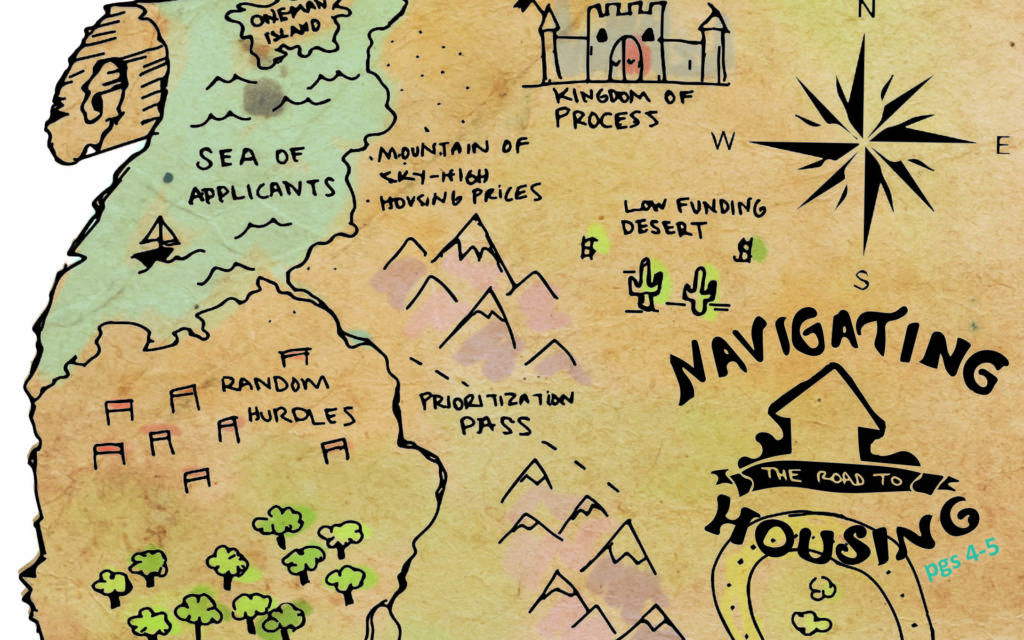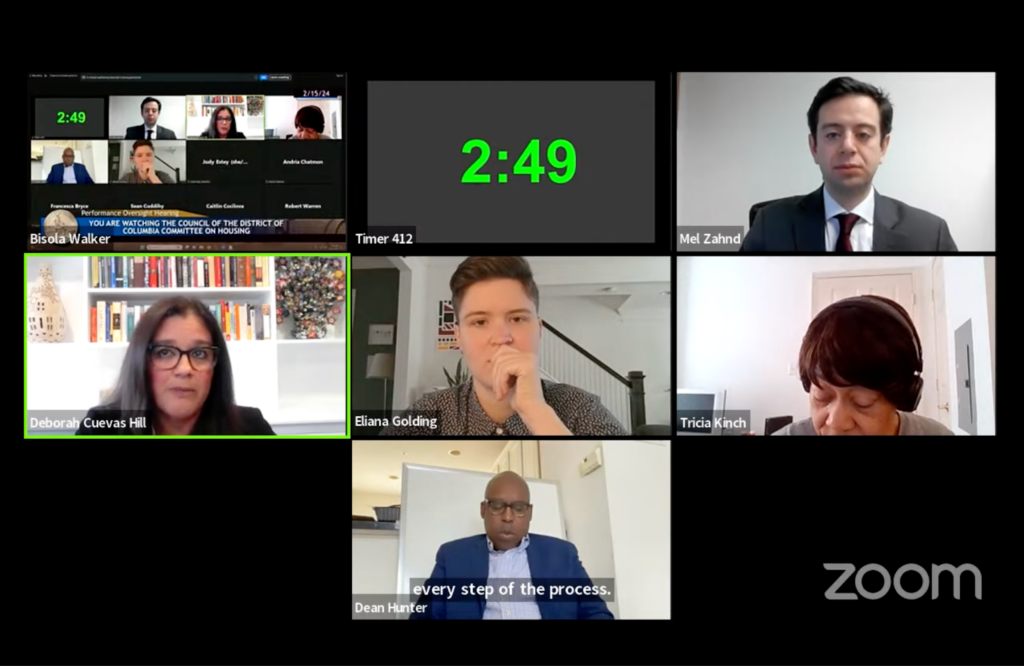If you’re chronically homeless and you want housing, where do you start?
Coordinated entry, also called Coordinated Assessment and Housing Placement (CAHP), is a new system for placing homeless individuals in housing.
It uses a “no wrong door” approach, which allows homeless individuals to be assessed in multiple locations and added to a central pool of applicants. This way, homeless people don’t need to traverse the city and visit many different housing providers to find out if there are open spots.
Once an individual’s vulnerability is measured, he or she is put into the Homeless Management Information System and matched with a housing navigator. Finally, the assessed person is placed in suitable housing out of an inventory of the city’s available affordable housing spaces.
“They don’t have to tell their story over and over again,” said Emily Buzzell, senior case manager at Miriam’s Kitchen and a leader of the movement toward coordinated entry in the District.
The coordinated entry assessment can also be administered on the street. The Vulnerability Index & Service Prioritization Decision Assessment Tool (VI-SPDAT) is used by certified assessors to determine what kind of housing each individual needs. So far, the coordinated entry system for singles has met success.
“I think we’re doing pretty well,” Buzzell said. “We’ve got good participation and lively discussion, and we’re seeing outcomes.”
Those outcomes show up in big numbers. Twenty-nine agencies and organizations are able to do assessments, more than 3,800 assessments have been done and 420 people are trained to do the assessing.
But Buzzell and her team have also run into roadblocks.
“It’s not as easy as flipping a switch. There’s a process, and we’re learning,” said David Tweedie, HMIS coordinator and system administrator for the Community Partnership for the Prevention of Homelessness.
The District’s CAHP pilot program started in February, 2014, after a successful coordinated entry system for veterans began the previous year. Community Solutions and the Rapid Results Institute held a kickoff event three months later to scale up the program.
[Read more: Getting Help May Be Getting Easier]
Last year the D.C. Council dedicated $250,000 to the coordinated entry system for singles, but the funding hasn’t been released yet. The Department of Human Services was not available to comment on this issue.
Buzzell says that the $250,000 would go towards staff, which the system currently works without, and flex funding to help prepare individuals to move into housing. For example, flex funding might pay for a client to obtain an ID, necessary for most housing.
“There is a lot of transparency and group accountability, but it is not sustainable without a formal management infrastructure,” said Kristy Greenwalt, executive director of the D.C. Interagency Committee on Homelessness and a member of the coordinated entry leadership team.
Buzzell added that the lack of housing space within the CAHP system is an obstacle.
“Some providers want to continue to do their own thing,” Greenwalt said. “They often want to continue to decide whom to accept based on their own application rather than joining the CAHP system.”
Last year the team began by explaining the benefits of participating in coordinated entry and inviting housing providers to join the system, according to Greenwalt. This “soft” approach has not worked with all providers.
“We are now writing it into our funding requirements and our contracts,” Greenwalt said.
Buzzell said an additional obstacle is that many people who have been matched to housing lose contact with their housing navigator before learning of the match. In response, a list of people who have been matched but are not found by their navigator is being circulated to service providers.
Still another obstacle to housing is the occasional anomalous score on the VI-SPDAT. A higher score means faster placement, but sometimes a person’s score does not reflect the real situation. For example, someone may have been homeless for many years and have a chronic disease but still end up with a low score. To combat this problem, assessors may complete a more in-depth questionnaire that has space for comments.

Housing navigators can also explain that a client is more vulnerable than his or her score suggests during one of the District’s twice-monthly case conferencing meetings. These meetings are only open to certified VI-SPDAT assessors, housing navigators and housing providers.
Some providers have employment or sobriety requirements, so discussing each person’s case, not just their score, is necessary. Case conferencing also allows navigators to offer choices to their clients.
“We want to give people options and ask, ‘which do you prefer?’’’ Buzzell said.
Despite CAHP’s growing pains, District case manager and senior outreach worker Julie Turner is happy with the new system.
She said that many unsuccessful approaches have been tried before to place homeless individuals in housing.
“It’s not uncommon for us to co-case manage,” Turner said. “The more the merrier, as long as we’re on the same page.”
The VI-SPDAT can help a case manager find out what services the individual needs immediately, especially because it asks about the person’s medical history.
“It’s a case management tool. It’s also a good conversation starter,” said Tweedie.
Another benefit in tracking all of the information that HMIS collects is that it shows how necessary it is to fund homelessness programs, according to Greenwalt. You can see where money should go and what the return on the investment will be in terms of reducing homelessness.
“If I were a funder, that’s a much more attractive proposal than ‘Please give us money,’” Greenwalt said.
The coordinated entry data shows there has been a success in housing people. Since August 2013, Washington, D.C., has participated in two 100-day initiatives to decrease veteran homelessness and two to decrease single adult homelessness, using the coordinated entry system. The first two initiatives housed 409 veterans cumulatively. The third and fourth initiatives housed 764 single adults.
In addition to the case conferencing meetings, Buzzell and Tweedie hold “systematic meetings” at Emery House with representatives of housing providers, homeless service providers and a representative of the Department of Human Services to track progress and troubleshoot the problems they have run into.
These meetings are essential because the HEARTH Act, a federal law that was amended to require coordinated entry, allows each community to decide how it will implement the system.
“We are using an approach to designing and implementing our CAHP system that is about empowering the people on the ground who are doing the work and can see firsthand what is working and what is not,” said Greenwalt.
Now Washington has joined the “Zero: 2016” national campaign to end chronic and veteran homelessness by 2016, rather than start another 100-day initiative. The District was also designated by the federal government to be part of the 25 Cities Initiative, which named the communities with the highest homeless prevalence and most difficult housing and labor markets.
“It will clearly take more investment in housing assistance,” Greenwalt said. She believes the lack of available housing in the CAHP system might hinder the goals of Zero: 2016.
Even with the use of the CAHP system, housing placements of chronically homeless people and homeless veterans have been far below the target goals set for Zero: 2016.
Part of the reason for not reaching these goals is that assessors don’t know what qualifies a person as chronically homeless, according to Tweedie. For example, having a disability is one of the criteria that designates individuals as “chronically homeless.” Someone with a disability might be successfully placed in housing, but would not be included in the placements counted for the Zero: 2016 campaign if he or she had not been correctly categorized first.
Tweedie also explained that there are people who do not fit either the “chronically homeless” or “homeless veterans” description who are more vulnerable than some that do. In these cases, the CAHP teams is not wedded to the priorities of Zero: 2016.
“We’re committed to housing the person who is most likely to die first, rather than checking off a box for chronic homelessness,” said Tweedie.








